BLACK SOCIAL HISTORY While the greatly fascinating ‘Macedonian’ Tribe, the Kalash of Pakistan, are relatively well-known and heard of, not many are familiar with the ’Sheedi’ people or the indigenous Africans of Pakistan.
They are a group that trace their ethnic descent from Afro-Arabs or Black Africans, with many claiming their lineage from Hazrat Bilal.
Owing to interesting yet conflicting accounts of the linguistic background to the formation and origin of what they are actually called, the Sheedis are also addressed as Sidi, Habshi or Makraani.
[ Although, the use of the word Makrani may be wrong, it must also not be confused with the Baloch living at Makran. Sheedis and Baloch are two different people]
[ Although, the use of the word Makrani may be wrong, it must also not be confused with the Baloch living at Makran. Sheedis and Baloch are two different people]
Reports and accounts related to their arrival in the region vary. Most say that they were brought here as soldiers by the several Arab invaders. The lesser validated view is what Amy Catlin, an ethno-musicologist from the University of California who specially studied Siddi culture, states:
‘The Siddis are descendants of African slaves, sailors and servants, and merchants who remained in India after arriving through the sea trade with East Africa and the Gulf, that was a process which began in the 12th century or before, and lasted until the late 19th century.”
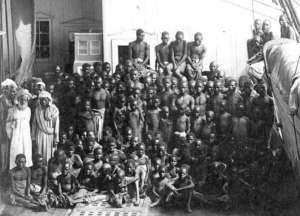 Others refer to two historical happenings of the 17th Century [ The first is doubtful ], Omani Arabs ruled Balochistan and often used to practice the trading and buying of African slaves. The second referal is towards the reported arrival of the Portugese slave traders in the Indian Subcontinent, who sold a number of them to princes.
Others refer to two historical happenings of the 17th Century [ The first is doubtful ], Omani Arabs ruled Balochistan and often used to practice the trading and buying of African slaves. The second referal is towards the reported arrival of the Portugese slave traders in the Indian Subcontinent, who sold a number of them to princes.
It may be deduced from all this, without generalization – that majority of Sheedis set their foot on this soil, as slaves. A conclusion affirmed by history: the origins and beginnings of Malik Andeel , Malik Ambar and Sidi Badr before their accession to power in ‘united India’.
‘There are two types of Sheedis in Pakistan: Arab-originated (Makranis), who speak the Balochi language and live in Southern Balochistan. And the others are Africa-originated living in Sindh speak Sindhi language and are called as “Ghar Java”.
A wholly enlightening and engrossing site ‘The African Diaspora in the Indian Ocean World’ writes:
‘It has been estimated that at least a quarter of the total population of the Makran coast is of African ancestry – that is, at least 250,000 people there.’
Sheedis are exceptionally capable of holding quite a set of skills and much flair, especially in sports. Those settled in the town of Lyari, which is noted to be the centre of this community and ever heated criminal activity along with being the favourite battleground of different gangs, are famed for their incredible yet unpolished potential in boxing, football and other sports.
 ‘Lyari is known as a football hotbed in Pakistan. Many of the nation’s top players come from the area.Football is so popular that crime levels dip significantly during the FIFA World Cup season.’
‘Lyari is known as a football hotbed in Pakistan. Many of the nation’s top players come from the area.Football is so popular that crime levels dip significantly during the FIFA World Cup season.’
Ali Ahsan mentions in his excellent compilation of the history of football in Pakistan:
‘The African-origin Sheedi community of the Makran coast and areas that now make up Karachi also, took up this sport with a love and passion that burns across Lyari.”
The most prominent of their events is the the annual Sheedi Mela, the vortex and the crescendo of the commemoration of the diversity that they represent, held in the rural area of Manghopir which is named after the Sufi Pir, Sakhi Sul
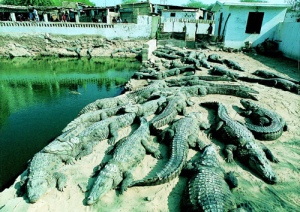 At the heart of the four-day festival are the crocodiles in the famed Manghopir pond, who are regarded as the disciples of Sakhi Sultan, particularly ‘Mor Sahib’; the eldest or the chief of the crocodiles.
At the heart of the four-day festival are the crocodiles in the famed Manghopir pond, who are regarded as the disciples of Sakhi Sultan, particularly ‘Mor Sahib’; the eldest or the chief of the crocodiles.
With the very commencement of the festival, a vivacioulsy contagious spell of energy, enthusiam and a dynamic deluge of cultural celebration is unleased.
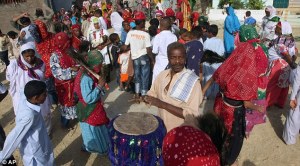 The ’Dhamaal’ and dance to the music and beating of the Congo Drums, and the practice of jumping over fire, are a clear homage to their rich African heritage and roots.
The ’Dhamaal’ and dance to the music and beating of the Congo Drums, and the practice of jumping over fire, are a clear homage to their rich African heritage and roots.
A central ritual in the Sheedi Mela, is the act of garlanding the ‘Mor Sahib‘, to which many pray to also.
‘The festival, which bears religious and cultural significance for the Sheedi community, is organised by members of the community who make offerings of sweets and meat to the sacred crocodile. According to the devotees of the Mor Sahib, people from the Sheedi community must offer the Mor Sahib a goat’s head, along with the sweets and meat, to ensure that the sacred crocodile continues to bless them all year round’.
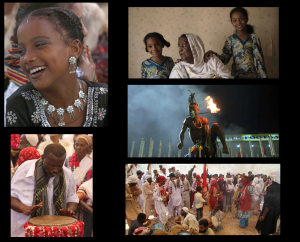 The Mela basically, serves as an evidence of the fact that the Sheedi people in Pakistan have unitedly maintained – that although, a lapse of centuries has occurred since their ancestors first settled or came here, they have admirably and firmly preserved their own distinct and vibrant culture, customs, mores, social values thus, every element that constitutes one’s identity.
The Mela basically, serves as an evidence of the fact that the Sheedi people in Pakistan have unitedly maintained – that although, a lapse of centuries has occurred since their ancestors first settled or came here, they have admirably and firmly preserved their own distinct and vibrant culture, customs, mores, social values thus, every element that constitutes one’s identity.
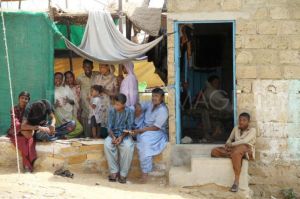




















































No comments:
Post a Comment